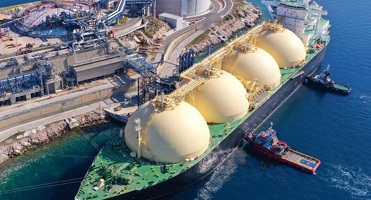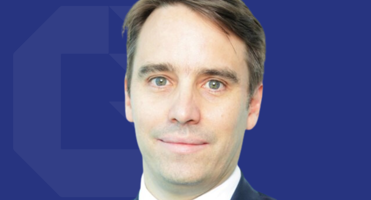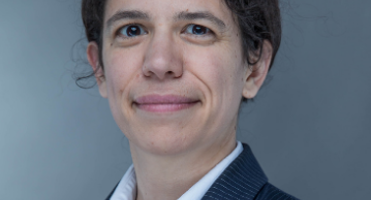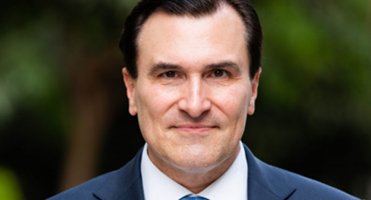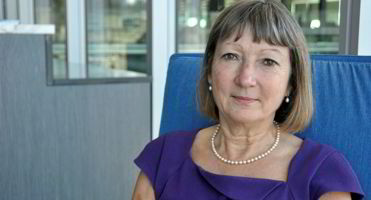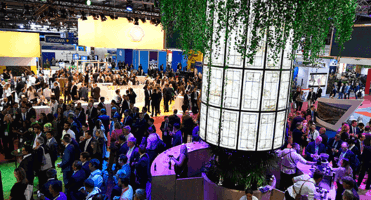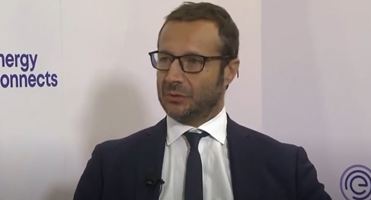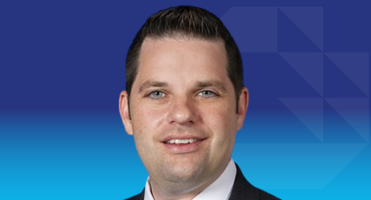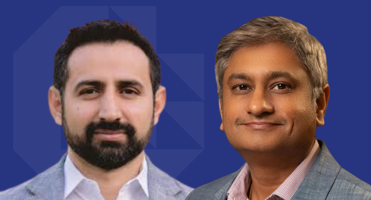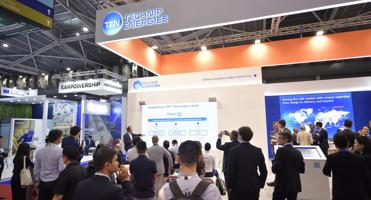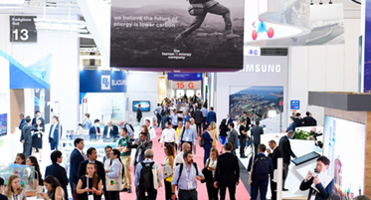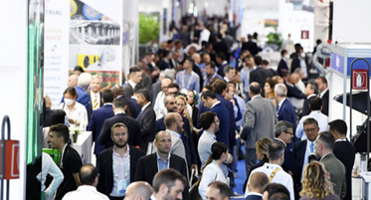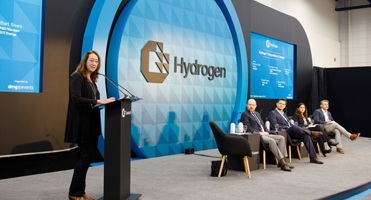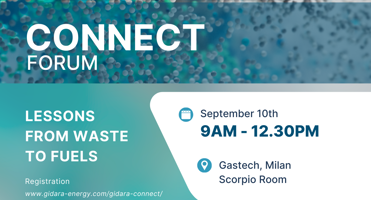We also sat down with Airhive’s CEO and co-founder Rory Brown for an exclusive interview and an in-depth dive into the company’s journey and the solutions they have to offer:
Can you share the founding story of Airhive? What inspired you to start the company?
I went back to university to do an energy and climate graduate degree in 2021/22 while doing what ultimately proved to be my last job in my previous career. I did this at University College London, who are particularly talented at building and using integrated assessment models – “IAMs” – which are used to explore global economic and technology pathways to net zero.
Looking at these analyses using IAMs, I was struck by this category of technology – carbon removal – that even in 2021 was clearly necessary in almost all plausible mitigation scenarios to stabilise the climate But at the time, there were just some low resolution renders of banks of fans in a desert out there – this was before Climeworks’ Orca plant in Iceland had come online. So we had models requiring billions of tons of carbon removal every year from fairly soon in the future but we had almost no such technology out in the real world.
That felt like a challenge that suited me – a clear big strategic need that could be brought about by practical action starting today. So, I started playing around with some ideas with a couple of fellow students and then ended up meeting my co-founder Jasper in early 2022. We decided to go for it in summer 2022 but only went full time from early 2023 when we were each free enough (me from my previous work, Jasper in his PhD). Since then, we’ve moved much faster than I would have thought, even though we’ve been really capital efficient and kept our team deliberately lean – we’re turning on a 1,000 tpa demonstration unit right now in Alberta, with only 15 people full-time and having spent less than $6m to date – the majority of that on pilot CAPEX.
What problem is Airhive aiming to solve, and how has your vision evolved over time?
We are aiming to solve for the cost of Direct Air Capture, above all else. And actually, I think there is remarkable consistency to our vision since when we started, because it was driven by that big picture assessment I mentioned before. We asked ourselves when we started ‘can we find a technology that solves for cost, and which can be built with today’s known industrial process technologies?’ That was the challenge we set ourselves.
We’re very fortunate that Jasper’s PhD was focused on decarbonised industrial production – for example, steel, hydrogen and concrete – but not just from a technical perspective. He and his supervisors privileged the techno-economics above all else – recognising it doesn’t really matter if something is technically elegant but there isn’t the potential for it to be better priced than the existing technology. So, when we were trying to answer our question, he had an instinct for what might be suitable – and two and a half years the core technology concept that emerged then hasn’t really changed, it’s just been fleshed out.
How is the startup community disrupting traditional decarbonisation efforts? Why is it so important to nurture the development and scaling of companies like Airhive?
Not having come from a startup background before this, it is remarkable to see how startups disrupt existing sectors of the economy with new thinking and approaches – and it’s reaching into newer areas at the moment, like defence. In decarbonisation, it’s been a bit more of a blend of startups and large industrial incumbents working together– take concrete for example, where some of the really interesting novel technologies are partnered with some of the big concrete producers.
Supporting startups comes with lots of benefits, from providing innovative new technology solutions that meet existing businesses’ needs to creating a wider culture of innovation that can be beneficial for corporates to have exposure to, but which can be difficult to foster internally. And we’ve seen corporates recognise that more and more in the past few years with the creation of CVCs, which are often seeking some mix of access to new technologies that might help them in their main business, and a useful financial return if those startups scale to unicorn or decacorn size.
How do you see Airhive's role in the broader DAC industry evolving across the next 5-10 years?
There will inevitably be a consolidation in the market in the next few years; there are something like 100 DAC startups, and I think the market can and should sustain 5 – 15 major developers as we grow DAC and carbon removal to gigaton scale in the next two decades. So, for us, the aim is to be one of those leading developers. We will earn that privilege by delivering DAC at a lower cost than the competition, and to do that we need to be great at technology and great at executing projects.
Are there any challenges to being a successful startup in the energy/decarbonisation space? How do you overcome these?
I think the biggest challenge is how you avoid being a large capital sink into which more and more investment goes without making technology development progress; that seems to me to be a major source of hardtech startups ultimately not making it. Startups are necessarily very ambitious in their missions, and it seems to me that a certain amount of hype at the early stage actually greases the wheels of raising capital and building a great team highly motivated by the mission. The risk is you believe your own hype about how great it’s going to be in a way that means you aren’t really focused and disciplined in doing the core things that create value: proving your technology at bigger and bigger scales, and then deploying it in real projects – first pilots and then early commercial projects – that prove out the business model. I see a lot of startups’ execution falling short of their lofty ambitions, and that can be a killer.
Another challenge is about building coalitions with investors, commercial and project partners, which is necessary because there are so many skillsets and capabilities required to bring big physical pieces of kit to market. But you don’t want to outsource too much of what you do, because you weaken the iteration and learning in the core team, and you also must be careful around protecting your IP in your partnerships too. So, finding a balance between building that coalition and keeping a core technology and project capability in-house is also really an important challenge for startups to meet if they want to successfully scale.
What do you think sets Airhive apart from its competitors in this space?
We are relentlessly focused on delivering lower cost and doing so today rather than at some vague future date. We’ve spent almost no money on PR or comms - we didn’t have a website until late 2023 - with the philosophy of underpromise and overdeliver, and instead channeled our funding into capex and core engineering capability in the team.
That approach probably made it harder for us to raise capital in the early days, as neither Jasper nor I are temperamentally prone to being hype-y, but it has borne fruit; we found some brilliant investors who are similarly serious and focused, and has also meant that as we turn in 2025 to raising for our first commercial plant, we have a lot of technology and commercial momentum and are an attractive proposition for the next round of investors from a valuation and dilution perspective.
Can you walk us through the technology behind Airhive’s products and solutions?
I think the Gastech crowd might be the best possible audience to actually understand the description of our technology! We use a horizontal fluidised bed as our front-end capture unit, in which we fluidise our mixed metal oxide sorbent. I’m hoping that doesn’t need lots of explanation. But in case it does, I’ll say briefly that fluidised beds, which were first pioneered in World War 2 to produce fuels and have been used in O&G, petrochemicals and mineral processing since then, are a reactor technology where you blow a gas through a bed of solid particles, causing the particles to take on the properties of the gas – i.e. they are propelled around like a turbulent fluid. This means you have continual mixing of the gas – for us, air – and the particles – our metal oxide sorbent – in a way that sustains a very high capture efficiency with quite limited energy inputs.
On the backend, we use a proprietary electro-calciner with a bespoke heat recovery system to desorb the CO2 from the sorbent. We then convey the sorbent back to the capture system and take the pure stream of CO2 to a post-processing unit where we chill and compress it to the specs it needs for wherever it’s going – whether into a geological reservoir or into a product like a fizzy drink.
What has been the most unexpected breakthrough or insight that has shaped Airhive’s product development?
When we were doing the proof-of-concept experiments in late 2022, we saw that we could capture effectively 100% (i.e. that’s the nearest round number) of the CO2 that we passed through the prototype, which was an amazing result. Most contactors used in DAC achieve much below that, which means they have to pass more air through to capture the same amount of CO2, and in many cases that means building bigger units per amount of CO2 you aim to capture. That is something we then replicated at progressively large scales in our pilots, including at faster and faster air velocities – both of which contribute to the really good CAPEX picture for our technology.
Are there any cutting-edge technologies or trends you're particularly excited about that will shape Airhive's future?
We think that the winning DAC doesn’t yet exist, and while we have a system we think is really good, we want to be the company that discovers that winning DAC. So, we are already building in-house capability to explore novel technologies outside of our core current formulation, and that will expand significantly after the next fundraise. We think that’ll also lay the foundation for keeping us as a continually innovating company for years to come, which given the pace of change we see out in the world we think is crucial to long-term success.
Are there any partnerships or strategic collaborations you’re currently focused on or looking to expand?
We’re excited about a number of our collaborations – some of which we’ve already announced, like the 1,000 ton per annum pilot we’re building with Coca Cola in Barcelona this year, and some of which we’re looking forward to announcing in the coming months. We are developing projects on three continents at the moment and have been edified to find ourselves in demand because of the combination of reaching high technology readiness quickly and being able to deliver systems at a very competitive cost.
What has been the most rewarding aspect of leading Airhive so far?
The whole startup path is a pretty exciting one, but the most rewarding piece is building a team. Given the sector we’re in, the people who want to work in it are incredibly mission-driven, talented and committed, so being able to share the opportunity to work on something that we think is so exciting with really talented people, is by some distance, the most fulfilling part.
What advice would you give to someone aspiring to lead a tech company/start their business in the DAC space?
Whether it’s DAC or another area, you’ll hear a lot of no’s early on, and it shouldn’t derail you, even if at the time it can be impossible not to find it a bit discouraging. Ultimately, we’re building a future that no one really knows, and we found that some of the people who, when we started, we thought were authorities in our space, ultimately don’t really know any more than anyone else. And as a startup, you are able to actively create that future in a way that is unique in the wider innovation ecosystem.
Our view was we would push on until we proved that our technology didn’t have the potential we had modelled it to have, regardless of all the strange opinions you hear along the way, and thankfully we found that our technology did have that potential.
I would also suggest looking for little wins early on. Every little bit of validation, funding and support helps when you’re getting started. If you’re open to opportunities as they come up, getting into accelerators or getting grant funding or early customers all helps build initial momentum and credibility, and can completely shift how you are perceived externally.









